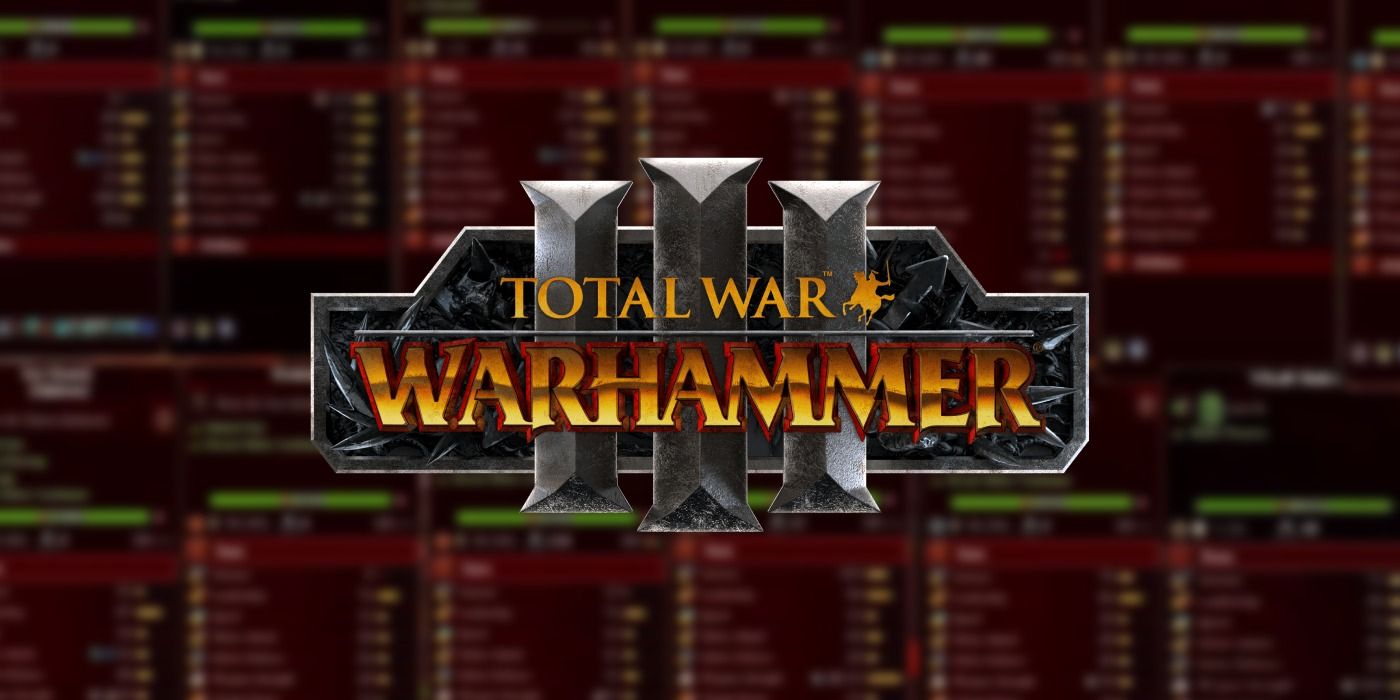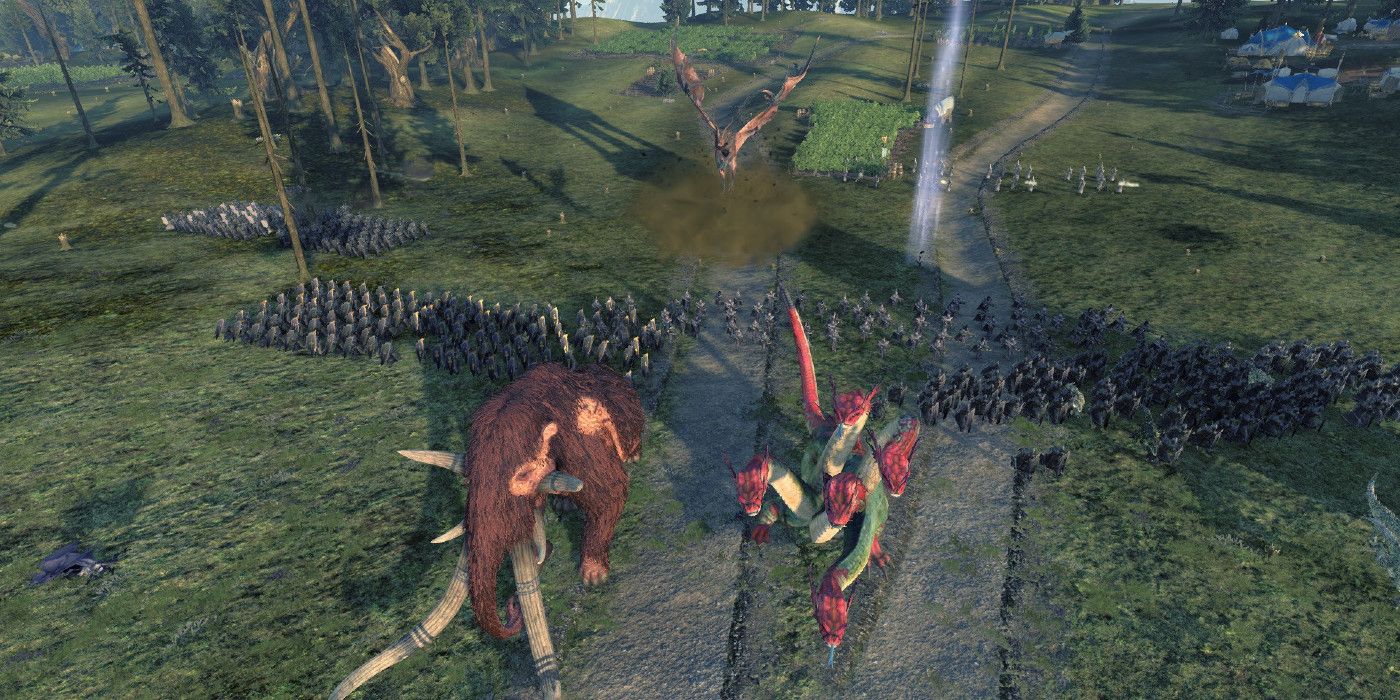There are many new units available in the new Total War: Warhammer III, and each unit has stats that affect how it will perform on the battlefield. Knowing what these stats mean can be the difference between victory, and potentially campaign-ending defeats. For players looking to paint the map their favorite color, understanding the stats of their units is key to success.
There are ten stats for a unit in Warhammer III: armor, leadership, speed, melee attack, melee defense, weapon strength, charge bonus, hit points, range, missile strength, and ammunition. Not every unit has every one of these stats. A unit with no missile attacks, such as the Peasant Longspearmen from the new faction Grand Cathay, will not have range, missile strength, and ammunition. Some of these stats are relatively simple. Ammunition indicates the number of times a unit can use its missile attack. Range indicates the maximum distance a unit's missile attack can hit. Hitpoints indicate the amount of damage a unit can survive before death. Stats related to combat calculations are more complex.
In order to understand what these stats mean, players must first understand how modern Total War games simulate combat, something that has changed a lot since the days of Total War: Rome. Determining whether an attack hits is the first step in the combat process. Hits are determined by percent likelihood and a random number generator. Every attack has at base a thirty-five percent chance to hit, to which the melee attack of the attacking unit is added and the melee defense of the defending unit is subtracted. When an attacking unit charges, it adds its charge bonus to its melee attack which increases the likelihood of a hit. Once a hit has been made, damage is inflicted. The amount of damage an attack deals is determined by the attacking unit's weapon strength (or in the case of ranged attacks, missile strength) and the defending unit's armor. Large units like ogres will usually have higher weapon strength, along with units that use two-handed weapons. Weapon strength is divided into armor-piercing and non-armor piercing damage. Armor-piercing damage is always delivered, but non-armor-piercing damage can be reduced by the defending unit's armor. The reduction is a percent of the total non-armor-piercing damage equal to between fifty and one hundred percent of the defending unit's armor value. This means a unit with two hundred armor will take no non-armor-piercing damage, allowing it to cut through non-armor-piercing units like the DOOM marine through hell.
Leadership and Unit Stats in Total War: Warhammer III
Leadership is the most important stat for any unit in Total War: Warhammer III, even though it is not part of the combat process, because it determines how hard it is to route. When a unit's leadership drops below 16, it will begin wavering (indicated by the unit flag flashing white). When leadership drops below 0 for 2.5 seconds or more, that unit will route, fleeing the battle. Many effects can reduce leadership. Being attacked in the rear, losing a fight, being attacked by missiles or artillery, certain spells, and being outnumbered can all inflict penalties on a unit's leadership, but the most important source of leadership penalties is Hit Point loss. The total percent of hit points lost during a battle, the amount lost in the past sixty seconds, and the amount lost in the last four seconds all apply individual penalties to leadership. Proximity to a general or hero, such as Tzarina Katarin, star of the Warhammer III cinematic trailer, provides a buff to friendly unit’s leadership which can counteract penalties until they wear off.
When a player understands how the game uses unit stats, a few simple ideas that may not have been obvious previously become clear. For example, a unit with no armor-piercing damage cannot deal significant damage to a unit with two hundred or more armor. Instead, try using a unit with high armor-piercing in its weapon strength, or try to reduce the enemy unit's leadership by stacking penalties until it routes. This strategy is especially effective against large monster units with low leadership, such as those used by Rakarth in Total War: Warhammer II. When faced with a unit with high melee defense, try charging it repeatedly to maintain the increase to hit chance. The world of Total War: Warhammer III is full of diverse troop types to fight for and against the player, and identifying the mechanics of the system they fight with is the first step towards victory.
Total War: Warhammer III is available on PC.


